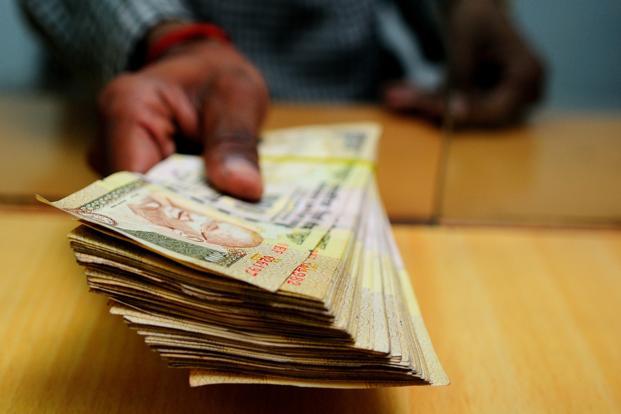The Reserve Bank of India (RBI) did two interesting things on Friday. One, it bought Rs 4,582 crore government bonds through its so-called open market operations (OMOs) and, two, it released a discussion paper on dynamic provisioning by banks. While the sale of bonds was to infuse liquidity in the system, the discussion paper on dynamic provisioning shows the Indian central bank’s concerns on the health of the banking system.
I can’t recall another instance of RBI buying bonds from banks just ahead of the close of a fiscal year and after the completion of the government’s borrowing programme. In fiscal 2013, which started 1 April, the government will borrow a record Rs 5.69 trillion to bridge an estimated 5.1% fiscal deficit, and 65% of this, Rs 3.7 trillion, will be raised in the first half of the year. RBI wants to ensure the success of the borrowing programme. OMOs infuse liquidity and also bring down bond yields. RBI’s explicit intention is never to tinker with the yields, but it happens and the government’s borrowing cost goes down. The yield on the benchmark 10-year bond dropped to 8.57% on Friday, from 8.61% the previous day. It had risen to 8.63% after the government announced its borrowing calendar last week.
With the latest OMO, RBI has bought close to Rs 1.3 trillion worth of bonds in the year ended 31 March, and it will continue to do so, possibly with more aggression, in the new fiscal. It will also have to cut banks’ cash reserve ratio (CRR), or the portion of deposits that banks need to keep with RBI, to infuse liquidity. After two cuts, CRR is now 4.75%. Every percentage point cut in CRR will infuse about Rs 65,000 crore, going by the current level of deposit liability of the banking sector.
Beside systemic liquidity, banks’ asset quality will be the other big concern of RBI in the new fiscal year. Which is why it wants to raise the level of provision—or the money that banks need to set aside to take care of bad assets. The so-called dynamic provisioning is nothing but a forward-looking loss provisioning. Simply put, it is the adjustment of banks’ provisions for defaults on loans in different economic cycles. Banks should do higher provisions during booms and lower during an economic slowdown. In other words, dynamic provisions create counter-cyclical buffers. Spanish banks have done this aggressively.
Indian banks haven’t been setting aside enough money to take care of their bad assets even as they are resorting to large-scale loan restructuring. Banking analysts are estimating that the impaired assets of the banking system—those that have already turned bad, plus the restructured loans—could rise from 5% as of March 2011 to 10% by September 2012. The total bad assets in the system, as a percentage of loans, are expected to go up from 2.3% last year to at least 3% but the bigger worry for the Indian central bank is banks’ aggressive debt restructuring.
The restructured debt in the banking system has gone up at least three times this year, pushing it to around Rs 1.1 trillion. Banks have recast at least Rs 75,000 crore this year and this will rise further with many infrastructure projects in trouble. The entire banking system’s exposure to infrastructure projects, including power, telecommunications and roads, rose from Rs 3.5 trillion in January 2011 to Rs 6 trillion in January 2012. Banks’ aggressive push for infrastructure is not driven by any love for the sector but the simple fact that such loans offer relatively higher yields and involve lower operating cost.
Within infrastructure, power is the most affected sector but banks are equally concerned about their quality of assets in iron and steel, textiles, aviation and a few other segments. A loan turns bad when the borrower is not able to pay interest for three months, or a quarter, but if a bank restructures a loan before the borrower defaults in paying interest, it needs to set aside only 2% of the value of the loan. Indeed, they need to set aside little more money for restructured loans, based on some calculations of their so-called net present value, but typically this is taken care of by raising the interest rates of such loans.
RBI has called for feedback from banks on dynamic provisioning by 15 May. Even if such provisions have an impact on banks’ profitability, it should go ahead with the proposal. It should also raise provision for certain segments to discourage banks from raising their exposure. Loan restructuring is an easy way out and if RBI chooses to ignore this, quite a few banks may head for trouble.
Tardy deposit growth
A banking analyst, reacting to my last week’s column on slow deposit growth, said China too is facing the same problem. There has been a sudden drop in deposit growth, and since August 2011, the deposit growth has been lower than the loan growth. If the gap widens, the banking system in China may not be able to support economic growth and there will be a liquidity crunch.
In India, in the first 11 months of fiscal 2012, bank deposits grew 12.4% against 13.8% of credit growth. Between April 2011 and March 2012, the deposit growth has been 14.5%, again much lower than 18.9% credit growth. If the trend continues, the banking system will not be able to support economic growth and the government will find it difficult to raise money from the market to bridge its fiscal deficit. Household savings are going down as people prefer to spend on consumption when inflation is high than keep money in banks and see its value being eroded. They also prefer gold and real estate than financial assets. This partially explains the slow deposit growth in India. China is a different story as the government deposits play a critical role there in liquidity management.



